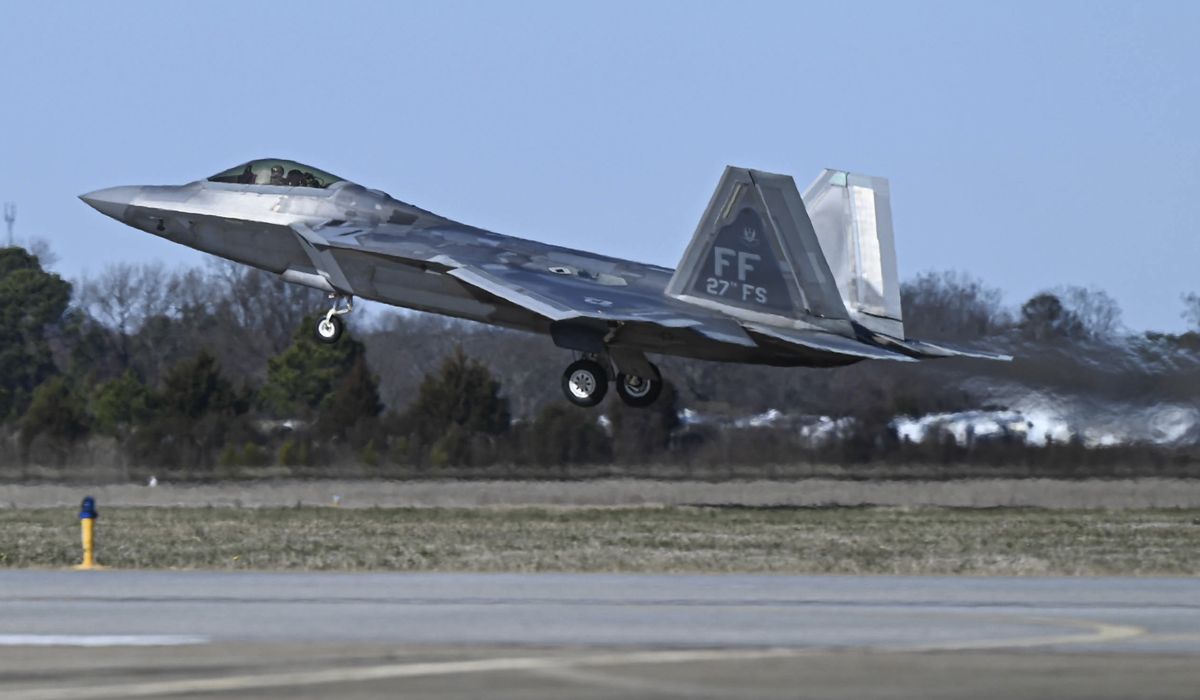


The Air Force has awarded Lockheed Martin a $270 million contract to modernize F-22 Raptors by adding advanced infrared threat detection sensors to the warplanes.
The defense contractor said Wednesday that by equipping the F-22 with the Infrared Defensive System (IRDS), Lockheed Martin will improve its lethality and survivability.
“We understand the need for advanced and versatile infrared systems like IRDS that will make pilots’ missions more survivable and lethal against current and future adversaries,” said Hank Tucker, vice president of missions systems at Lockheed Martin. “We’re committed to supporting the Air Force through continuous innovation of capabilities to deter and defeat evolving threats.”
The IRDS debuted in 2022 and was first integrated into Tactical Air Support’s F-5 Advanced Tiger aggressor jet. The sensors allow pilots to track enemy aircraft over long distances without worrying about possible interference. Additionally, the systems work passively and do not emit signals that could be intercepted by the enemy to let them know that F-22 pilots are tracking them.
However, while the IRDS is deft at instantly picking up the bearing and angle of an enemy aircraft, it typically takes more effort for the sensors to determine range. But two aircraft, both with integrated IRDS, can easily triangulate the position of an enemy aircraft using infrared sensors.
The F-22 modernization efforts come as other nations develop their own stealth fighters that will be increasingly difficult to detect. The Russian Su-57 and China’s Chengdu J-20 are expected to not only fly under outdated radar systems but also be equipped with long-range sensors.
• Vaughn Cockayne can be reached at vcockayne@washingtontimes.com.
